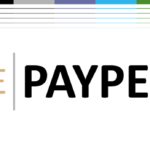Ports are backed up, trucks (though not nearly enough of them) are driving day and night to retail distribution centers from those ports, and retailers are in a frenzied search for seasonal hires from the warehouse to the sales floor. Meanwhile, the pandemic malingers, making things murkier.
It’s all adding up to one of the most interesting — and suspenseful — holiday shopping seasons ever.
Looking at recent research and dozens of interviews with business leaders across the spectrum, PYMNTS is focusing on five areas that merchants, brands and partners must reinforce to get what they want for the holidays: namely, a meaningful recovery from the disappointing COVID-19 Christmas of 2020.
Trend #1: Digital
It’s shaping up to be a decidedly digital holiday this year, and retailers need to be ready for it.
With PYMNTS research finding that nearly 48% of consumers will start shopping before Thanksgiving, merchants have little time left to make sure digital shopping is up to par.
According to the 2021 Holiday Shopping Outlook: Why Convenience and Personalization Will Be Key, a PYMNTS and Kount collaboration, just over 87% of consumers intend to shop online for holiday gifts — 10 percentage points more than in 2020 — with 31% of Gen Z consumers, 28% of millennials and 25% of bridge millennials saying they plan to spend more online as well.
Of the 15% of shoppers who said they’ll do all shopping online, one-third will outspend 2020. The quality of digital shopping experiences will impact seasonal tallies if too many shopping carts are abandoned over frictions.
According to PYMNTS’ latest Checkout Conversion Index, “The total shopping time spent per consumer has risen from 145 seconds in 2020 to 179 seconds in Q2, an increase of 24%. More time shopping may suggest that consumers have less patience for friction at checkout in the future, as they are spending more time before reaching the payment process.”
Several factors, from payments choice to features, affect sentiments on what good digital shopping experiences are made of. Per the Index, “Leading merchants tend to offer consumers more payment choices. We found that top merchants offer 7.8 payment methods on average and bottom-tier merchants offer 6.5 payment methods on average. Nearly all (97%) of top merchants offer buy buttons, while just 56% of bottom merchants do so.”
Get the study: Removing Friction at the Checkout: How Payment Experiences Influence Consumer Choice
Trend #2: In-Stock Inventory Availability
With supply chains clogged, a major concern is product availability this holiday season.
PYMNTS found that 71% of online holiday shoppers “cite product availability as a factor that will affect their online purchasing decisions — the highest for any consideration,” and 28% call availability “the most important factor in determining where they will shop.”
Market leaders have not been idle. As PYMNTS recently reported, “Amazon has spent time over the last couple weeks, as have other retailers, reassuring consumers that they can meet this holiday’s demand. The company says it has been planning and preparing since Jan. 1, increasing ports of entry across its network by 50%, doubling container processing capacity and utilizing multiple forms of transportation, including planes, trucks, ships and vans.”
As for Walmart, the chain said inventory increased by 11.5% in the third quarter, showing a posture of preparedness for the holiday.
CFO Brett Biggs told analysts that Walmart has also “significantly increased” the number of items available for expedited delivery. PYMNTS reported that “the retailer’s fulfillment services penetration continues to grow. In August, the company also launched Walmart GoLocalx, a white-label, delivery-as-a-service program for competitors, which executives touted as evidence of the retailer’s capabilities.”
See also: Walmart Adds Workers, Touts In-Stock Affordable Items for Holiday Shopping
Trend #3: Personalization
With 58% of consumers “very” or “extremely” interested in online stores that offer customer rewards, according to PYMNTS research, offering personalization is a critical element to success.
Per the Holiday Shopping Outlook study, “More than one-third of consumers say they are ‘very’ or ‘extremely’ interested in shopping with online merchants that provide product recommendations based on their purchasing histories, and 38% are ‘very’ or ‘extremely’ interested in product reviews based on their viewing histories.”
Today’s digital shoppers have other unique characteristics, and retailers need to know about them.
“Practicality-driven” shoppers, comprising 40% of the total, are keen on product availability delivery. “Advice-seeking shoppers,” at 28% of the total, want tailored shopping experiences with product recommendations. “Convenience-driven” shoppers (21% of the sample) favor ease of purchasing and are also focused on delivery options, as found in PYMNTS’ Holiday Shopping Outlook study.
Mercifully, “hard-to-please” shoppers are the smallest segment, at 12%. Besides getting products they want, this group demands better rewards and has heightened concerns about transaction security.
Get the study: The 2021 Holiday Shopping Outlook: Why Convenience and Personalization Will Be Key
Trend #4: Buy Now, Pay Later
Debatably the hottest retail payments story of the moment is buy now, pay later (BNPL), and the installment credit option is expected to make a major splash this holiday season.
Per the 2021 Holiday Shopping Outlook, “the expected proportional increase to 3% of consumers using mostly BNPL for online holiday shopping is nearly double the 1.6% a year ago.”
To illustrate, PYMNTS recently reported that “in the 12 months that ended in September, PayPal’s BNPL “transaction volume was $9.5 billion; as many as 9.5 million consumers elected to use BNPL at checkout, while 950,000 merchants feature the option.”
Also powering BNPL receipts during winter gifting will be BNPL mono-line players like Affirm — currently now available via Amazon and Walmart — and the Square/Afterpay linkup, which is set to make an impact.
See also: Walmart, Target and Others’ Moves Position BNPL as the Hot Item for 2021 Holiday Selling
Trend #5: Fraud and Abuse Awareness
Fraud attacks have risen apace with eCommerce growth, and cybertheft fears feature in holiday plans.
Last year, fraudsters most often targeted younger consumers and those living paycheck to paycheck.
“The 18% of bridge millennials who experienced fraud while shopping online made up the second-highest category,” PYMNTS found. “Other age groups fared slightly better. Twelve percent of Gen Z online shoppers, 9% of Generation X and 7% of baby boomers and seniors were targets of fraud in 2020. Thirty-four percent of the bridge millennials and millennials who fraudsters targeted were victimized a second time, a far higher portion than for other age groups.”
Then there’s consumer fraud — a minefield that merchants must successfully navigate.
The study “Beyond eCommerce Fraud: How Retailers Can Prevent Customer Policy Abuse,” a PYMNTS and Forter collaboration, states that “surveyed businesses universally report that all forms of consumer abuse are rising,” with 78% of retailers seeing more promotion abuse over the past year, particularly in “item not received” (INR) abuse (up 76%) and return abuse (rising 66%).
Featurespace Founder Dave Excell recently told PYMNTS’ Karen Webster that the 2021 holidays may prove especially productive for fraudsters.
PYMNTS reported that “as the bad actors have the technical tools to set up phony online storefronts promising that the coveted goods are in stock. They’ll grab the consumers’ card payment (or even sensitive data) and make off with the money — then promptly close shop.”
Get the study: Beyond eCommerce Fraud: How Retailers Can Prevent Customer Policy Abuse







